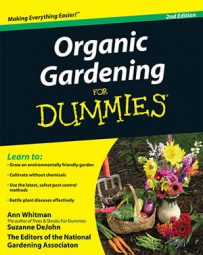Deer are among the most troublesome of garden pests. A deer or two can ravage an entire garden overnight. Deer eat plants and trample vegetation, and bucks rub their antlers on young trees to remove the "velvet" and to mark their territory.
Several types of repellents may keep deer out of your yard:
Soap: Hang bars of soap from low tree branches or from stakes so that the bars are about 30 inches off the ground. Fragrant, tallow-based soaps such as Irish Spring work best.
Hair: Ask your barber or hairdresser if you can have some hair trimmings. Human hair hung in mesh bags about 3 feet off the ground may deter deer.
Spray: Use spray repellents on foliage. One recipe: Mix three raw eggs in a gallon of water and spray the mixture on plants. This substance apparently smells worse to the deer than it does to you.
If the repellants don't work, here are some other strategies:
Use row covers: In early spring, spread row-cover fabric over tender new growth, supporting the covers with wire cages or hoops if necessary. These row covers can deter the deer long enough to give your plants a head start and allow time for wild food plants to become plentiful.
Motion-detector-activated sprinklers: These may deter deer for a short time. Playing a radio in the garden at night may work for a few days, but the deer will catch on quickly, and if they're hungry enough they won't care.
String fishing line between posts: This sometimes confuses deer enough that they go elsewhere.
Put up fencing: The only surefire way to keep deer out of your garden is to put up a tall fence. Deer have been known to jump 10-foot fences, but an 8-foot fence will deter most intruders unless they're very hungry.
To ensure the success of your fence, use deer tendencies to your advantage. Apparently, deer are intimidated about jumping when they can't tell how much distance they have to clear. For that reason, they're less likely to jump a fence over a narrow, long garden than a fence that surrounds a large, wide garden. The two long sides appear to be too close together for the deer to see a place to land. You can create the same illusion by installing a fence so that it slants outward away from the garden. This technique can intimidate the deer by making the fence appear wider than it really is. You can even make a 5-foot-fence more deer proof by using taller posts and attaching strands of wire above the fence, such as at 7 feet and 10 feet.
Many plants are touted as deer resistant, but if deer are hungry enough, they'll eat just about anything. Still, if you live in an area where deer pressure is high, including deer resistant plants like catmint, hellebore, and yarrow increases the likelihood that at least something in your garden will survive.

